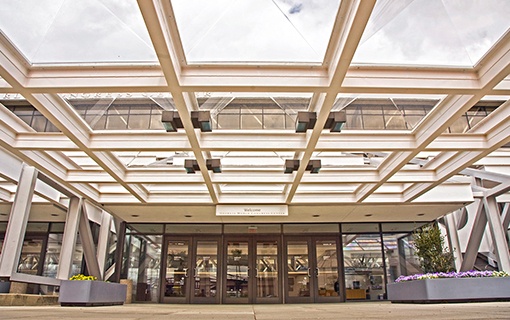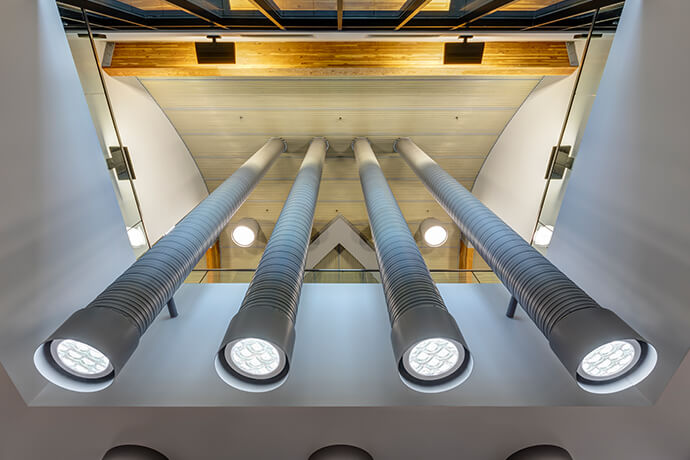BRAVURA NEWS
skylights can help reduce energy costs
Daylighting skylights are an excellent option for interior designers looking to bring natural light into commercial spaces. Skylights can help to reduce energy costs, improve the aesthetics of a space, and provide health and wellness benefits to building occupants. Here’s a guide to commercial daylighting skylights for interior designers:
1
Consider the location of the skylight: The location of the skylight is crucial to its effectiveness. Consider the orientation of the building and the path of the sun throughout the day. A skylight facing east will provide morning sunlight, while one facing west will provide afternoon sunlight. North-facing skylights will provide even light throughout the day, while south-facing skylights may provide too much direct sunlight during certain times of the year.

2
Choose the right type of skylight: There are several types of skylights available, including fixed, vented, and tubular. Fixed skylights are a good choice for areas where ventilation is not necessary, while vented skylights are ideal for areas that require air circulation. Tubular skylights are a good choice for smaller spaces and can be installed in areas where traditional skylights cannot.
3
Consider the size of the skylight: The size of the skylight is an important consideration, as it will affect the amount of natural light that enters the space. Larger skylights will provide more light, but they may also be more expensive to install. Consider the size of the space and the desired amount of natural light when choosing the size of the skylight.

4
Choose the right glazing: The glazing on the skylight will affect the amount of light that enters the space, as well as the amount of heat gain or loss. Consider the climate of the area when choosing the glazing. Low-E coatings can help to reduce heat gain or loss, while tinted glazing can help to reduce glare.
5
Consider the installation process: The installation process for skylights can vary depending on the type of skylight and the structure of the building. It’s important to work with a professional installer who can assess the structure of the building and determine the best installation method.
6
Evaluate the impact on the building’s energy performance: Daylighting skylights can help to reduce energy costs by reducing the need for artificial lighting. However, they can also increase heat gain or loss, which can affect the building’s energy performance. Consider the energy performance of the building when choosing the type and size of skylight.
7
Consider the impact on the occupants: Daylighting skylights can provide health and wellness benefits to building occupants, including improved mood, increased productivity, and reduced eye strain. However, too much direct sunlight can also cause discomfort or glare. Consider the needs of the building occupants when choosing the size, location, and glazing of the skylight.

In conclusion, commercial daylighting skylights can be a great addition to a building’s design. When choosing a skylight, it’s important to consider the location, type, size, glazing, installation process, impact on energy performance, and impact on occupants. By taking these factors into consideration, interior designers can choose the right skylight to meet the needs of their project.
